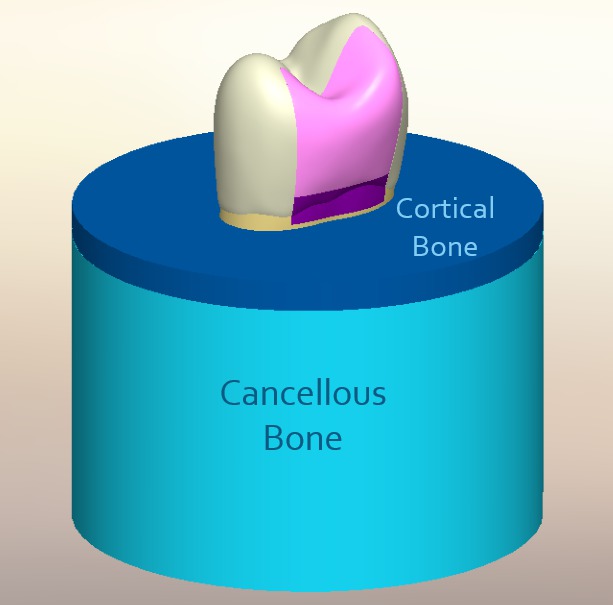IADR Abstract Archives
Parametric Study of an Inlay Restoration With Deep Margin Elevation
Objectives: Deep margin elevation (DME) is a clinical technique which restores a subgingival margin to an adequate level, such that unfavorable crown-root-ratio caused by crown lengthening procedure can be avoided. However, additional adhesive interfaces and multiple material use may increase the risk of debonding and jeopardize structural integrity. The present study was aimed to evaluate biomechanical performance of an inlay restoration combined with DME.
Methods: Micro-CT images of a human maxillary premolar were used to construct its 3D geometry. Various designs of Class II cavity were established via a parameterized manner. Seven parameters (Table 1) were characterized to define the outline and the dimensions of the cavity. Finite element analyses were performed on 79 design points, which were generated by the Latin hypercube sampling to represent the design space. The maximum tensile stress (MTS) at each bonding interface and the peak maximum principal stress (MPS) in each component were examined under a load of 500N. Two restorative materials, ceramics and composite resin, were considered.
Results: In the ceramic group, the peak MPS reduced from 82.072 to 75.670 MPa when upper cavity depth (Du) decreased from 3.55 to 3 mm. Conversely, it remained around the same level (from 41.785 to 41.537 MPa) in composite resin group. The MTS at elevation-enamel interface was found sensitive to cavity open angle (θ) in both groups. With θ varied from 120 to 90 degrees, the MTS increased from 1.851 to 29.879 MPa for ceramic group, and from 1.352 to 28.952 MPa for composite resin group.
Conclusions: Shortening Du can reduce the risk of fracture in a ceramic restoration, while the reduction will be little when composite resin is used. For both materials, a θ larger than 90 degrees is recommended to avoid high stress concentration. Material options and cavity design can affect treatment outcome significantly if DME is considered.
Methods: Micro-CT images of a human maxillary premolar were used to construct its 3D geometry. Various designs of Class II cavity were established via a parameterized manner. Seven parameters (Table 1) were characterized to define the outline and the dimensions of the cavity. Finite element analyses were performed on 79 design points, which were generated by the Latin hypercube sampling to represent the design space. The maximum tensile stress (MTS) at each bonding interface and the peak maximum principal stress (MPS) in each component were examined under a load of 500N. Two restorative materials, ceramics and composite resin, were considered.
Results: In the ceramic group, the peak MPS reduced from 82.072 to 75.670 MPa when upper cavity depth (Du) decreased from 3.55 to 3 mm. Conversely, it remained around the same level (from 41.785 to 41.537 MPa) in composite resin group. The MTS at elevation-enamel interface was found sensitive to cavity open angle (θ) in both groups. With θ varied from 120 to 90 degrees, the MTS increased from 1.851 to 29.879 MPa for ceramic group, and from 1.352 to 28.952 MPa for composite resin group.
Conclusions: Shortening Du can reduce the risk of fracture in a ceramic restoration, while the reduction will be little when composite resin is used. For both materials, a θ larger than 90 degrees is recommended to avoid high stress concentration. Material options and cavity design can affect treatment outcome significantly if DME is considered.


